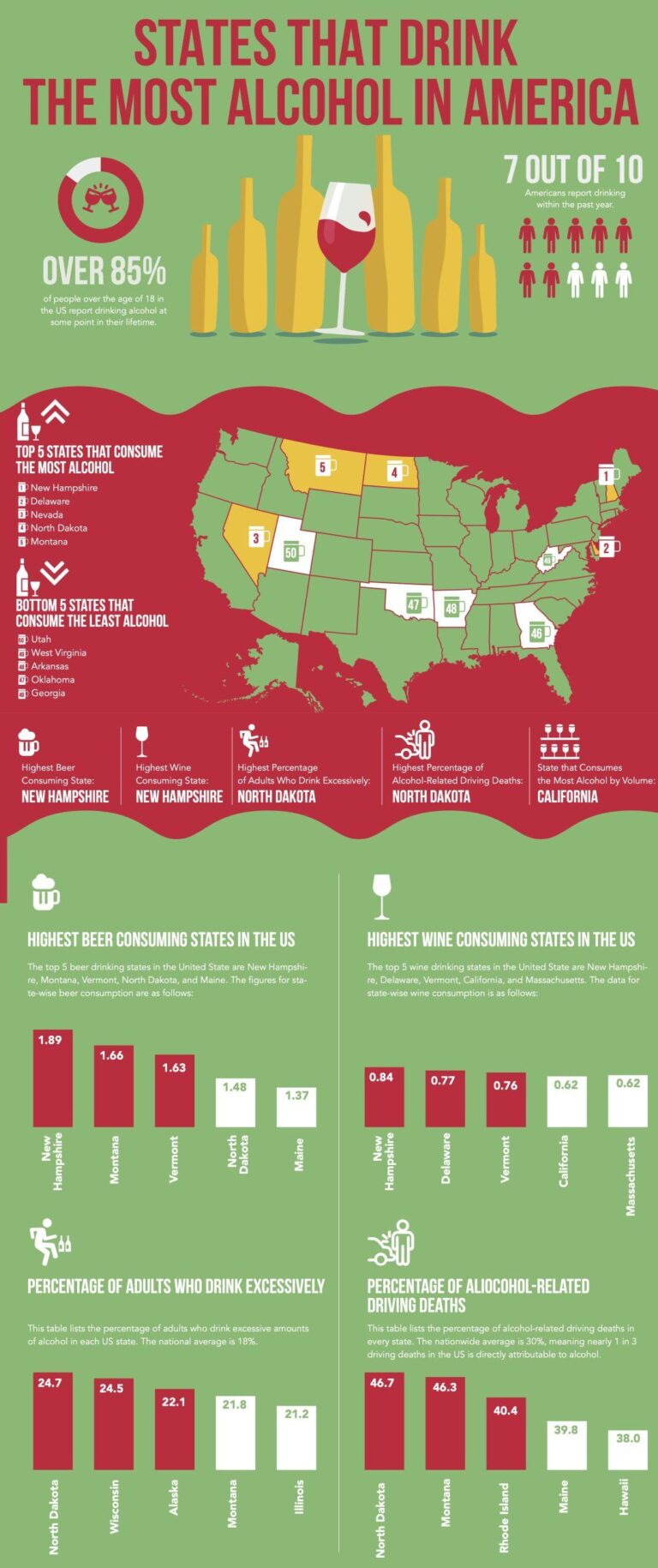Understanding the Overwhelming Impact of Alcohol on American Health and Society
While the opioid epidemic and other drug crises have garnered significant media and policy attention, alcohol remains the leading cause of drug-related deaths in the United States by a substantial margin. Recent analyses, including those reported by The Washington Post, reveal that fatalities linked to alcohol surpass those from all other drugs combined, underscoring a critical yet often overlooked public health issue. This article delves into the latest statistics, explores the underlying reasons for alcohol’s outsized death toll, and discusses the policy implications necessary to curb this ongoing crisis.
The Extensive Health and Economic Burden of Alcohol Use
Alcohol consumption continues to pose a profound threat to public health across the nation. Despite its legal status and social normalization, alcohol is responsible for more deaths annually than opioids, cocaine, and methamphetamine combined. Current estimates attribute over 95,000 deaths each year to alcohol-related causes, including liver cirrhosis, acute alcohol poisoning, and fatal accidents such as impaired driving incidents. Beyond mortality, millions suffer from chronic illnesses, mental health disorders, and family instability linked to excessive drinking.
The economic consequences are equally alarming. The cumulative cost of alcohol misuse—encompassing healthcare expenditures, law enforcement, and lost workforce productivity—reaches approximately $249 billion annually. This staggering figure breaks down into several key areas:
- Medical treatment for alcohol-induced diseases and injuries
- Public safety and criminal justice system expenses
- Workplace absenteeism and diminished job performance
- Long-term disability and premature mortality costs
| Category | Annual Cost (Billions USD) |
|---|---|
| Healthcare Services | $28 |
| Law Enforcement & Criminal Justice | $12 |
| Lost Workforce Productivity | $85 |
| Accidents and Injuries | $30 |
| Other Social Costs | $94 |
Factors Behind Alcohol’s Leading Role in Drug-Related Deaths
The predominance of alcohol in drug-related mortality statistics is largely due to its legal availability and cultural integration. Unlike illicit substances, alcohol is easily accessible in retail outlets and social environments, often without immediate legal consequences. This widespread consumption means that even moderate drinkers face risks of long-term health complications, accidental injuries, and fatal overdoses. Moreover, alcohol’s lethality extends beyond direct toxicity—it is a major contributor to fatal traffic collisions, violent behavior, and chronic diseases such as liver failure, which collectively amplify its death toll.
Key contributors to alcohol’s high fatality rate include:
- Widespread use: More than half of U.S. adults consume alcohol regularly, far exceeding the user base of other drugs.
- Dangerous drug interactions: Alcohol is often combined with prescription medications and opioids, heightening the risk of fatal outcomes.
- Chronic health effects: Long-term alcohol abuse leads to progressive diseases that may not be immediately linked to overdose statistics but result in premature death.
| Substance | Annual U.S. Deaths | Primary Causes |
|---|---|---|
| Alcohol | 95,000+ | Accidents, chronic illness, overdose |
| Opioids | 70,000+ | Overdose, polydrug use |
| Cocaine | 15,000+ | Cardiac arrest, overdose |
Policy Interventions: Essential Tools to Mitigate Alcohol-Related Harm
Implementing robust policies and regulations is fundamental to reducing the health and societal damage caused by alcohol. Governments employ a variety of strategies, including taxation, advertising limitations, and sales restrictions, to influence drinking behaviors. For example, raising excise taxes on alcoholic beverages has been demonstrated to lower consumption rates while generating funds for public health initiatives. Restricting alcohol marketing—especially those targeting younger populations—helps prevent early initiation and normalizes responsible drinking habits. Additionally, laws governing sales hours and minimum legal drinking ages serve to limit access during high-risk periods and delay the onset of alcohol use.
However, the effectiveness of these measures depends on consistent enforcement and cultural acceptance, which vary across states and communities. Below is an overview of common regulatory approaches and their intended impacts:
| Regulatory Strategy | Intended Effect |
|---|---|
| Excise Taxes | Reduce consumption by increasing cost |
| Advertising Controls | Limit youth exposure and promote responsible use |
| Sales Time Restrictions | Decrease availability during peak risk hours |
| Minimum Drinking Age Laws | Delay initiation to lower lifetime harm |
To remain effective, these policies require ongoing review and adaptation to counteract evolving marketing tactics and shifting social norms. Integrating public education, community involvement, and healthcare services strengthens the overall framework for reducing alcohol-related harm.
Calls for Integrated Approaches to Reduce Alcohol-Related Mortality
Public health authorities and addiction specialists advocate for a comprehensive strategy to address the escalating number of alcohol-related deaths. They stress that isolated interventions are insufficient and recommend a combination of prevention, treatment, and policy reforms. Key recommendations include:
- Increasing taxes on alcoholic drinks to discourage excessive consumption
- Expanding availability and accessibility of addiction treatment and recovery programs
- Strengthening regulations on alcohol advertising, particularly those aimed at young people
- Launching widespread public education campaigns to raise awareness about the dangers of heavy drinking
Recent data highlight the urgency of these measures, showing that alcohol-related mortality rates exceed those from opioids and other substances combined. The table below compares annual death rates per 100,000 population for major drugs:
| Substance | Annual Deaths per 100,000 People |
|---|---|
| Alcohol | 29.8 |
| Opioids | 21.5 |
| Stimulants | 8.3 |
| Cannabis | 0.1 |
Experts agree that without a unified and well-resourced approach involving federal, state, and local stakeholders, the rising trend in alcohol-related deaths will persist. Collaborative efforts are essential to reverse this public health emergency.
Moving Forward: Prioritizing Alcohol Harm Reduction in America
As the nation continues to confront the devastating effects of substance misuse, the reality remains stark: alcohol is the deadliest drug in the United States by a significant margin. Despite ongoing awareness campaigns and regulatory attempts, the human and economic costs of alcohol consumption remain alarmingly high. Addressing this entrenched problem demands renewed commitment to comprehensive policy reforms, enhanced public education, and expanded treatment resources. Only through coordinated and sustained action can the United States hope to reduce the toll of alcohol and improve the health and well-being of its citizens.







